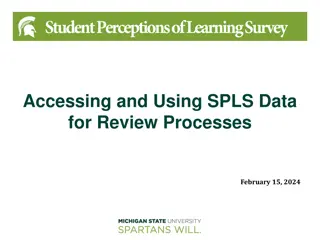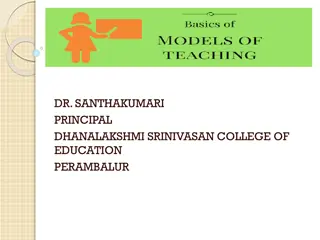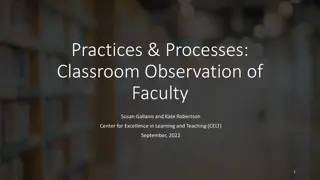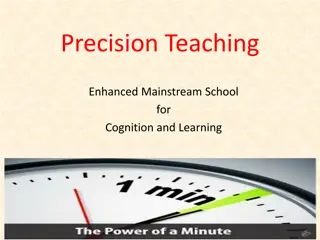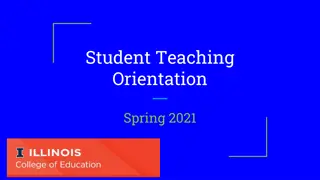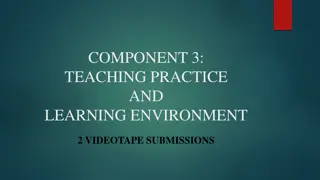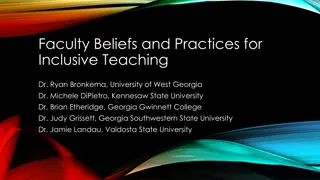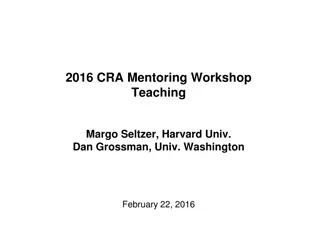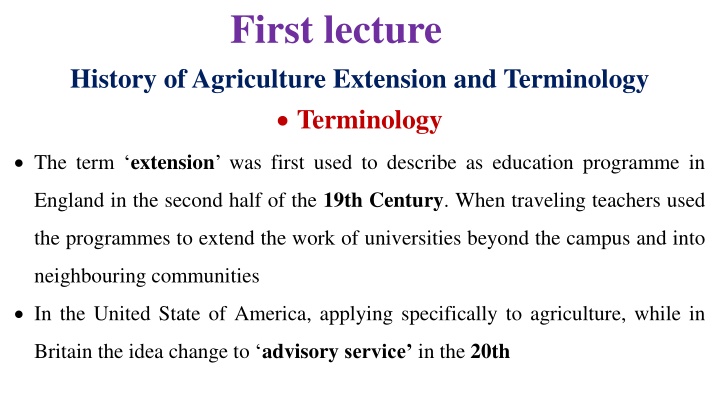
Agricultural Extension History and Terminology Through the Ages
Explore the origins of agricultural extension from ancient Chinese practices to modern services, along with the evolution of terminology and definitions. Learn how extension programs have improved farming methods, increased production efficiency, and uplifted communities globally.
Download Presentation

Please find below an Image/Link to download the presentation.
The content on the website is provided AS IS for your information and personal use only. It may not be sold, licensed, or shared on other websites without obtaining consent from the author. If you encounter any issues during the download, it is possible that the publisher has removed the file from their server.
You are allowed to download the files provided on this website for personal or commercial use, subject to the condition that they are used lawfully. All files are the property of their respective owners.
The content on the website is provided AS IS for your information and personal use only. It may not be sold, licensed, or shared on other websites without obtaining consent from the author.
E N D
Presentation Transcript
First lecture History of Agriculture Extension and Terminology Terminology The term extension was first used to describe as education programme in England in the second half of the 19th Century. When traveling teachers used the programmes to extend the work of universities beyond the campus and into neighbouring communities In the United State of America, applying specifically to agriculture, while in Britain the idea change to advisory service in the 20th
Arabic: Al-Ershad (guidance) Dutch: Voorlichting ( lighting the path ) French: Vulgarisation ( popularization ) Spanish: Capacitaci n ( training "capacity building") Persian: Tarvij and Gostaresh ( to promote and to extend ) -
Definition of agriculture extension Maunder, 1973: Extension is a service which assist farm people, through educational procedures in improving farming methods and techniques, increasing production efficiency and income, bettering their levels of living and lifting social and educational standards. Adams, 1982: Agricultural Extension: assistance to farmers to help them identify and analyse their production problems and become aware of the opportunity for improvement. R ling, 1988: Extension is a professional communication intervention deployed by an institution to induce change in behaviours. 2006: Extension is the process of enabling change in individuals, communities and industries involved in the industry sector and in natural resource management.
Origins of agricultural extension It is not known where or when the first extension activities took place, however, Chinese officials were creating agricultural policies, documenting practical knowledge, and spreading advice to farmers at least 2,000 years ago About 800 BC, the minister responsible for agriculture under one of the Zhou dynasty emperors organized the teaching of crop rotation and drainage to farmers. The minister also hired equipment to farmers, built grain stores and supplied free food during times of famine. In Mesopotamia (roughly, present-day Iraq) around 1800 B.C. Archaeologists found unearthed clay tablets which were engraved advice on watering crops and getting rid of rats. Some hieroglyphs on Egyptian columns also gave advice on avoiding crop damage and loss of life from the Nile's floods The oldest fully surviving Chinese agricultural paper was from 535 A.D., aimed to show landowners how to improve their estate management through the advice they gave to their tenants.
Modern agricultural extension services The first agricultural extension service of a modern kind came into presence as the result of a problem. The problem was the outbreak of potato disease in Europe in 1845. In Ireland its effects were particularly severe because the predominantly farmer population relied on potatoes in their diet, and "the potato famine" continued until 1851. In 1847, the Earl of Clarendon, wrote a letter to the president Agricultural Improvement of Ireland, This letter, was about to urge the president to appoint traveling lecturers to travel around the most troubled areas to inform and show small farmers, in simple terms, how to improve their cultivation and how to grow nutritious root crops other than potatoes.
from the 1850s agricultural teachers (Wanderlehrer) began to give advices to farmers, he spent a year travelling around regions giving talks, demonstrations, and advice to farmers; and farmers' sons at winter agricultural schools. University extension" was first used by the Universities of Cambridge and Oxford in 1867 to describe teaching activities that extended the work of the institution outside the campus. The beginning of the 20th century, when colleges in the United States started to do demonstrations at agricultural shows and giving lectures to farmer s clubs.
Second lecture Principles and Objectives of Agriculture Extension
Principles of Agriculture Extension Extension is not an exact science, extension workers should follow to certain procedures that experience and experimental studies have shown the result. Some principles have been established that are applicable to different extension conditions.
Principles based on different situation: 1. Principle of cultural difference: Culture means social tradition. There is a cultural difference between the extension workers and the farmers and between groups of farmers in habits, customs, values, attitudes and way of life. To be successful, extension worker must work in harmony with the cultural of the people. 2. Principle of interests and needs:People s interests and people s needs are the starting points of extension work. To identify needs and interests of the people, extension worker should work hard and not applying its interest. Extension work will be successful when it is based on the interests and needs of the people.
3. Principle of learning and doing: Learning will be more effective when people participate in doing the work. Learning by doing is most effective in changing people s behaviour. People should learn what to do, why to do, how to do and with what results. 4. Family principle: The target for extension work should be the family and developing the family, economically and socially. Not only the farmers, the farm women and farm youth need to be involved in extension programs.
5. Principle of leadership: Identifying different types of leaders and working with them is essential in extension. Local leaders are the defenders of local believed and action. Their involvement is essential for the success of a program. The leaders may be trained and developed to act as carriers of change in the villages. 6. Principle of adaptability: Extension teaching methods must be flexible and adopted to suit the local conditions. The people, their situation, their resources are differ from place to place and time to time. 7. Principle of satisfaction: The end product of extension work should produce satisfying results for the people. Satisfying results support learning and motivate people to search for improvement.
Objectives of Agricultural Extension It is essential that extension programs should have clearly defined objectives. Objectives could be set at different levels, depending on the nature of the programme. 1.Fundamental objective: The fundamental objective of extension is the development of the people. It is to develop the rural people economically, socially and culturally by education.
2. General objectives (Function): The general objectives of the extension are: 1. To assist people to discover and analyse their problems 2. To develop leadership among people and help them to solve their problems. 3. To distribute information based on research and or practical experience, that people accept it and put it into actual practice 3. Working objectives: this objective is focuses on specific activity in a selected geographic area.
Third lecture Philosophy of Extension Philosophy is a body of principles; it provides guidelines for performing the activities in life in a particular way. The philosophy of extension work is based on the importance of an individual in the promotion of progress for rural people. The main purpose is to transform the people by improving wanted changes in their knowledge and skills.
The philosophy of extension can be explained in the following statements: 1. Extension has a philosophy of culture: It respects the culture of people. It brings cultural change through cultural development. 2. Extension has philosophy of social progress: Its works is based on needs and desires of the people. It simplifies change and helps people to adjust to them. 3. Extension has philosophy of education for all: Distributes useful knowledge to all people, regardless of their personal, social and economic characteristics. 4. Extension has philosophy of democracy: Co-operation with the individuals, groups, and institutions interested in common welfare. Selects and solves the problems based on the needs. 5. Extension has philosophy of local responsibility: Encourages people to contribute gradually in their own activities. Prepare suitable leaders to control programs and plans.
Related Concepts with agriculture extension There are concepts related to agricultural extension: 1. Adult Education: any purposeful work towards self-development and improvement perform by any individual. Adult education objectives are depending on training for citizenship, holiday time activity, economic efficiency and professional training 2. Advisory Service: agricultural extension advisory service was first used in Europe. It was providing organized technical services and publications to farm families by travelingteachers of agriculture promoting scientific knowledge to the field of agriculture.
3. Technology Transfer: there is four major part of technology transfer: Policy includes those external factors that directly effect on the technology system. Technology development includes that part of agricultural research system that can be applied and adapted. Technology distribution, related to spreading technology to the farmers. Technology application 4.Hospitality Extension: Hospitality industry is a recent addition to the traditional subject matter areas in extension. The hospitality industry consists of units offering accommodation, food, drinks and other essential services required by travelers.
Hospitality extension can be defined as an educational process that is directed at preparing people for the provision of friendly, generous and comfortable reception. Hospitality services are expanding and providers need adequate training at various levels. Hospitality extension operates on extension education principles and philosophy.
Planning the hospitality program at the community level process including 1. Getting Started: relating representatives from as many groups as possible to gain support for the program 2. Set Objectives: decide on objectives and goals and alternate strategies for completing goals 3. Choose a Coordinator: select a well-organized, enthusiastic, resourceful person to organize the hospitality program 4. Obtain Resources: available resources and facilities such as schools and organizations that be able to provide hospitality training 5. Attendance: decide on number of participants, encouragements for participation 6. Budgeting and Fund Raising: how shall the program is financed?


